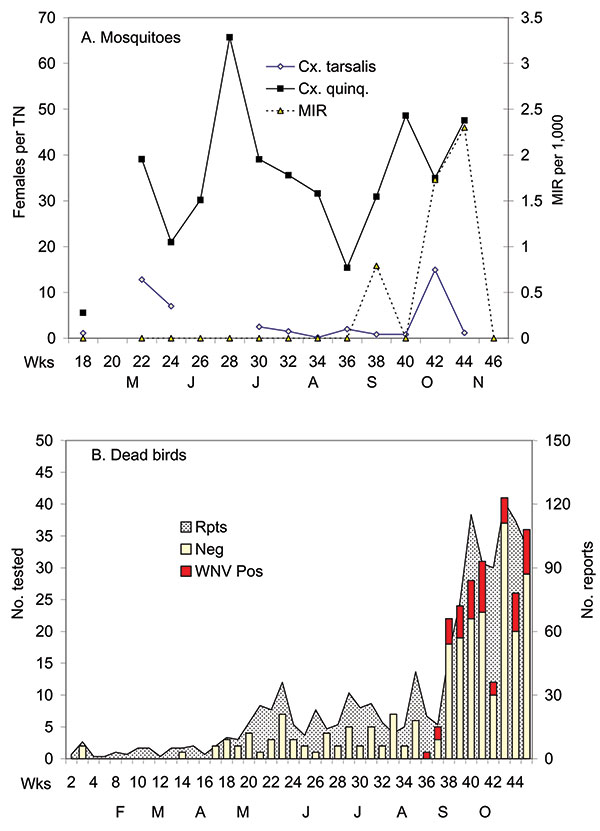Volume 10, Number 8—August 2004
Research
West Nile Virus in California
Figure 6

Figure 6. Virus temporal dynamics in relation to Culex abundance in the Whittier Narrows area of Los Angeles County. Shown are (A) female Cx. tarsalis collected per CO2 trap night (TN) and female Cx. p. quinquefasciatus collected per gravid TN, West Nile virus (WNV) minimum infection rates (MIR) per 1,000 Cx. p. quinquefasciatus tested, adjusted for differential sample sizes, and (B) number of dead birds reported, tested, and positive for WNV in Los Angeles County.
1Procedures for the bleeding and husbandry of sentinel chickens were described in Protocol 9608 approved by the University of California, Davis, Animal Use and Care Administrative Advisory Committee.
2The collection, banding, and bleeding of wild birds were conducted under Protocol 9605 approved by the Animal Use and Care Administrative Advisory Committee of the University of California, Davis, California Resident Scientific Collection Permit 801049-02 by the State of California Department of Fish and Game, and Master Station Federal Bird Marking and Salvage Permit 22763 from the U.S. Geological Survey Bird Banding Laboratory.